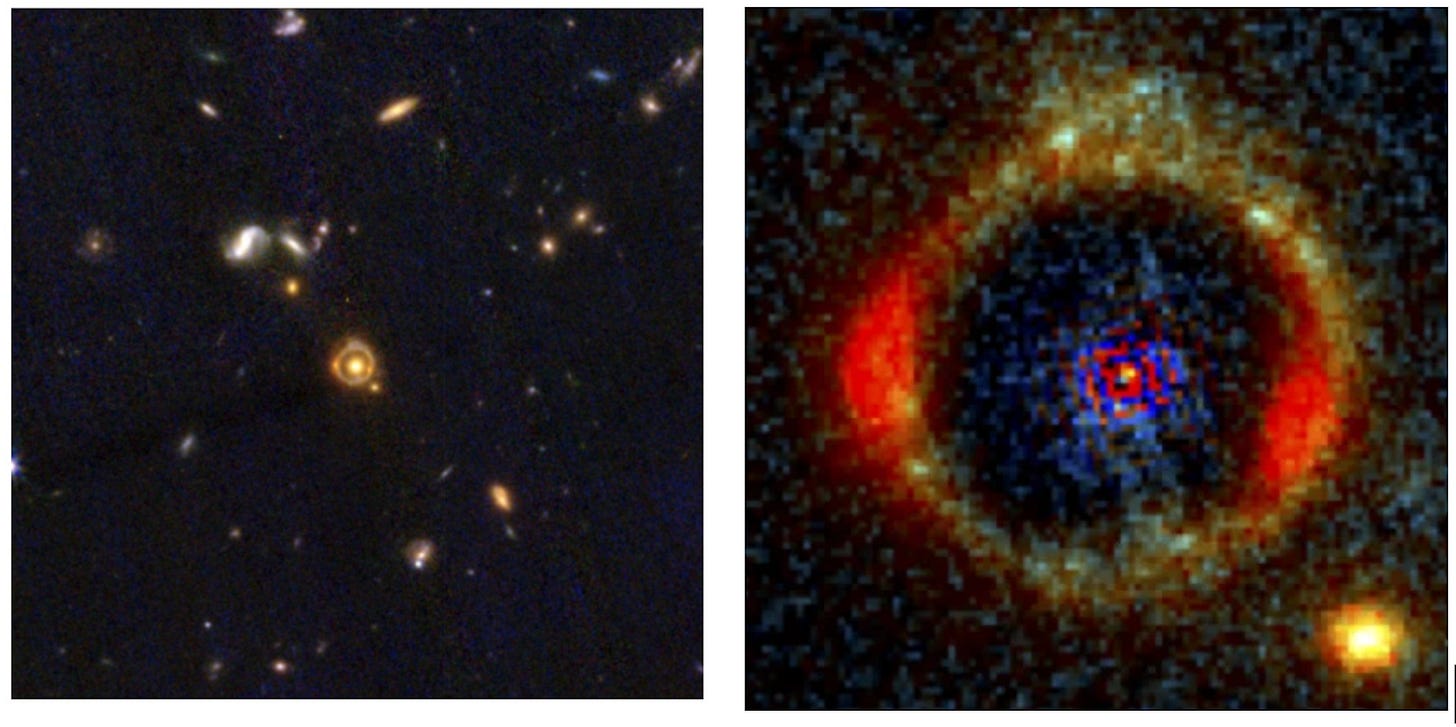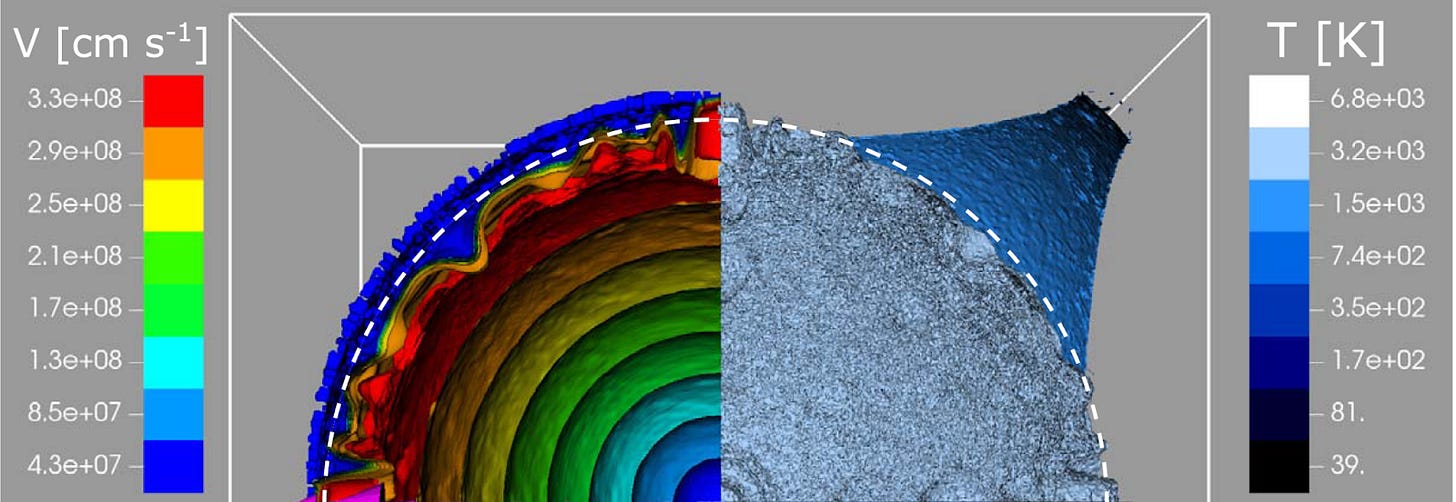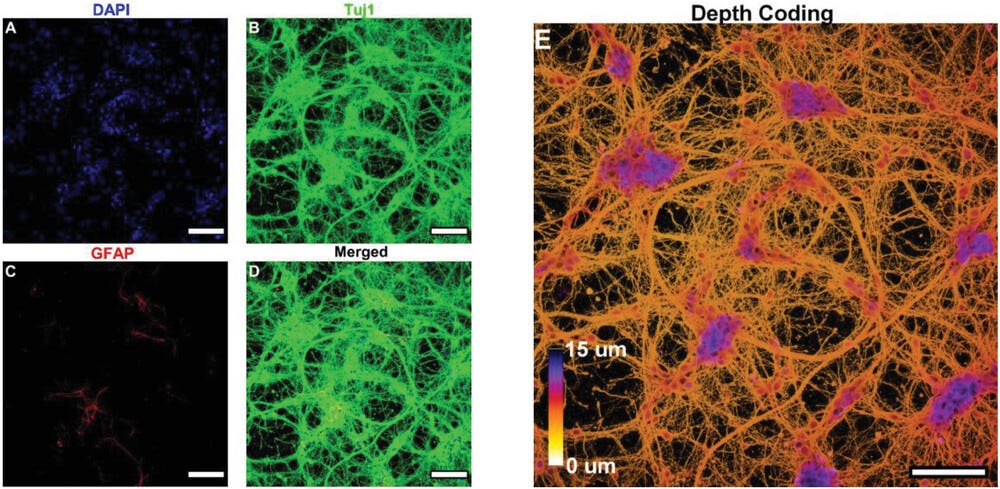Webb Telescope Spots Full Einstein Ring
Einstein Ring, JWST-ER1, original and magnified. Image: NASA/JWST
NASA’s James Webb telescope has found the most beautiful Einstein Ring ever. An Einstein Ring is a phenomenon produced by gravitational lensing, when light from one object is bent around another one. Usually the two objects are different galaxies and most of the time we don’t see a full ring but rather several dots or arcs. But if the configuration coincidentally happens to be particularly symmetric – as in this case – we see a ring. The galaxy in the center of the new Einstein Ring that’s causing the lensing is an elliptic galaxy about 10 billion light years away and about 650 billion times as massive as our Sun.
Besides looking spectacular, gravitational lenses are also useful because they allow astrophysicists to infer the mass of the bending object, including its dark mass. Paper here.
New 3D Simulation of Supernova
Image: Ke-Jung Chen et al, ApJ (2023).
An international team of astrophysicists has recently created a high-resolution 3D simulation of supernovae that uses the most sophisticated fluid and gas dynamics to date. They looked at the collapse and following explosions of supermassive stars over a hundred times bigger than our sun with a new code called “CASTRO”.
Supernovae simulations are incredibly computationally intensive because of their chaotic nature and the sheer size of the system. Even using the Minnesota Supercomputing Institute, the simulation took over 50,000 computer hours to complete. The new simulation provides unprecedented information into the gas turbulence and energetics in supernovae, as well as the mixing of elements and creation of new elements in the supernova process. While the simulation is visually stunning and scientifically interesting, it is certainly not the first 3D supernova simulation, as some outlets claimed. Paper here.
3D-Printed Nerve Cells Create Brain-Like Networks
Image Credit: Yao et al., Advanced Healthcare Materials (2023)
Bio-engineers at Monash University have successfully used “bio-ink” to 3D-print nerve networks that mimic the human brain. The bio-ink is a gel that contains living cells (from rat brains) as well as non-cellular materials. The researchers printed the inks in an arrangement mimicking patterns of grey and white matter typically seen in the brain’s cortical structure. The printed networks displayed spontaneous neuron signals and responded to electrical stimulation. Press release here, paper here.







